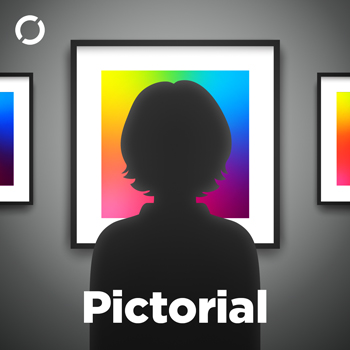Latest Episodes
#55: Terracotta Army
March 8th, 2022 · 34 minutes
Thousands of years ago, the first emperor of China dictated the construction of thousands of life-sized terracotta soldiers in a hidden mausoleum. Fifty years ago, we found them.
#54: Saturn Devouring His Son
February 22nd, 2022 · 32 minutes
Saturn Devouring His Son is a dark, disturbing painting made by the Spanish artist Francisco Goya, depicting horrific violence, never intended for the public eye. And it's a really funny meme.
#53: Methods for Viewing Art
February 8th, 2022 · 38 minutes
Betty uses her nearly 10 years of gallery guide experience to teach Quinn strategies for how to engage with art without any contextual information; Quinn interprets some paintings through her experience of of horror movies, Americana, and picnic food.
#52: Sarah Hatton
January 25th, 2022 · 28 minutes
This episode we're talking about the contemporary artist Sarah Hatton. Her work focuses on reclaiming materials, the natural world, and investigating questions about human nature. Also, she's Canadian, so Betty's having a great week.
#51: Concert Posters
January 11th, 2022 · 41 minutes
For our first episode of 2022, Betty is walking Quinn through a brief history of concert posters: the good, the bad, and the psychedelic.
#50: Art Musicals
December 14th, 2021 · 30 minutes
In blatant exploitation of the responsibility of hosting our 50th episode, Quinn walks Betty through musicals about famous visual artists.
#49: The Florida Highwaymen
November 30th, 2021 · 34 minutes
Betty tells Quinn all about the Florida Highwaymen, a group of African American landscape artists who sold paintings door-to-door and out of the trunks of their cars starting in the 1950s.
#48: Take the Money and Run
November 16th, 2021 · 33 minutes
In October, the internet came together to laugh about an absurd-sounding art story: a Danish artist had pocketed $84,000 given to him by a museum and returned blank canvasses titled "Take the Money and Run." Today we dive into the full story.
#47: Hindu Art
November 2nd, 2021 · 34 minutes
We finish up our religious art mini-series with a look at the temples and sculptures of Hindu art!
#46: Jewish Art
October 19th, 2021 · 32 minutes
In part three of our religious art mini-series, Quinn and Betty talk about the hamsa, Hiddur Mitzvah, and the paintings of Marc Chagall.

